Brief History of Volyn Oblast
Volhynia is a region with a very rich history. Control over this territory many times passed from one state to another. Here is just a summary of the main historical events.
In the 6th - the beginning of the 7th centuries, Volhynia was inhabited by associations of the tribes of the Dulebs. At the beginning of the 10th century, this region established close connections with Kiev. Founded in 987, the Principality of Volhynia was part of the Old Russian state (Kievan Rus). The name “Volhynia” as a definition of this territory first appeared in the chronicles of 1077.
In the 12th century, the town of Lutsk became one of the centers of Volhynia. In 1199, Galicia was joined to the Volhynia Principality and the Principality of Galicia-Volhynia arose, which was one of the largest principalities during the collapse of Kievan Rus, a significant political and economic force in this region.
This principality pursued an active foreign policy in Eastern and Central Europe. Its main neighbors and rivals were the Kingdom of Poland, the Kingdom of Hungary and the Polovtsy, and from the middle of the 13th century - the Golden Horde and the Grand Duchy of Lithuania. Seeking protection from their attacks, the Principality of Galicia-Volhynia repeatedly signed agreements with Catholic Rome, the Holy Roman Empire, and the Teutonic Order. At the same time, political, economic and cultural ties with other Russian lands were weakening.
More historical facts…
The Galicia-Volhynia Principality fell into decay due to a number of reasons. Aggravated relations with the Golden Horde (the principality was its vassal) was one of them. After 1323, the Kingdom of Poland and the Grand Duchy of Lithuania began to seize the lands of the principality. It ceased to exist after the complete division of its territories in 1392. Volhynia became part of the Grand Duchy of Lithuania.
After the creation of the Polish-Lithuanian Commonwealth (the Union of Lublin of 1569), Volhynia passed into the possession of Poland, Volhynia Voivodeship was formed. People of this region took an active part in the anti-Polish Khmelnytsky Uprising also known as the Cossack-Polish War, which became the beginning of the formation of Ukrainian statehood.
In 1793-1795, after the second and third partitions of Poland, Volhynia became part of the Russian Empire. In 1797, Volhynian Governorate was created. The second half of the 19th century was characterized by significant industrial development of the region, construction of railways.
During the First World War, the front line between the Russian and the Austro-German forces passed through the territory of Volhynia several times. In June 1916, Russian troops under the command of General Brusilov broke through the front, occupied Lutsk and pushed back the Austro-German troops. For more than one year, the front was on this line; as a result, many nearby settlements were destroyed.
In 1921, under the Riga Treaty between Soviet Russia, Soviet Ukraine and Poland, western Volhynia, including the territory of present Volyn Oblast, became part of Poland. The Volyn Voivodeship was formed with its center in Lutsk, which covered the territory of present Volyn Oblast, Rivne Oblast and the north of Ternopil Oblast of Ukraine.
As a result of the Molotov-Ribbentrop Pact, spheres of influence in Eastern Europe were divided between Germany and the USSR. September 1, 1939, the Germans began the occupation of Poland. On September 18, 1939, units of the Red Army entered Lutsk. On November 27, 1939, Volyn Oblast of the Ukrainian Soviet Socialist Republic was formed.
June 22, 1941, this territory was one of the first attacked by Germany. By July 8, 1941, the entire Volyn Oblast was occupied. During the occupation, about 165,000 residents of the region were killed, more than 20,000 people were moved to Germany for forced labor. The battles for the complete liberation of the region lasted from January to July 1944. In 1944-1945, 107,000 residents of the region were mobilized into the Soviet army.
By 1949, Volyn industry reached its pre-war level. In 1950, logging and woodworking (38%) occupied the first place in the structure of local industry, food industry (36%) took the second place. In the 1950s, coal mining began in the region. In 1967, there were 9 mines in Volyn Oblast, which produced more than 4,500,000 tons of coal per year. In 1959, on the basis of Lutsk repair shops, a machine-building plant was established, which became one of the largest enterprises in the region.
December 1, 1991, an all-Ukrainian referendum was held to confirm the act of proclaiming the independence of Ukraine. In Volyn Oblast, 96% of those who voted supported independence.
Landscapes of Volyn Oblast
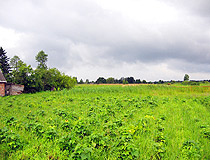
Cloudy day in the Volyn region
Author: Adrian Shephard
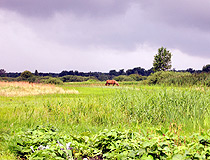
Summer in Volyn Oblast
Author: Adrian Shephard
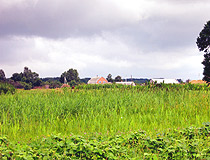
Rural landscape in the Volyn region
Author: Adrian Shephard
Volyn Oblast - Features
The length of Volyn Oblast from north to south is 185 km, from east to west - 155 km. The climate is temperate continental. Winters are mild and summers are warm. The average temperature in January is minus 4.5 degrees Celsius, in July - plus 18.6 degrees Celsius.
The leading sectors of the local economy are the industrial and agricultural sectors. Agriculture specializes in meat and dairy livestock, as well as in the production of grain, sugar beets, vegetables, potatoes. The leading industries are food, machinery, fuel, chemicals, and building materials.
On the territory of the Volyn region there are various mineral resources. In the southwestern part, there are deposits of coal (the Lviv-Volyn coal basin). There are also reserves of natural gas (about 7 billion cubic meters), copper, phosphates. The lakes of this region contain significant reserves (over 61 million tons) of sapropel - a valuable raw material used as fertilizer, feed additives for livestock, as well as in medicine. Forests occupy about 30% of the territory of the region.
Volyn Oblast has a significant natural-recreational and cultural-historical potential. This region has long been famous for its health resorts and sanatoriums. Volhynia is characterized by a diverse and beautiful landscape, numerous lakes and forests, as well as large deposits of medicinal mud. There are sources of mineral waters too.
Volhynia has a rich architectural heritage represented, first of all, by the religious buildings of the Orthodox, Uniate and Catholic churches. Ethno-festivals, crafts exhibitions, knightly tournaments are held in this region of Ukraine.
There are 495 monuments of architecture and urban planning (of which 200 are of national importance), 149 monuments of archeology (16), 1,282 historical monuments (7), 35 monuments of monumental art (1). The list of historical settlements includes 20 settlements. The most interesting ones are the cities of Lutsk, Kovel, and Volodymyr-Volynsky.
Main Attractions of the Volyn Region
Lake Svitiaz - the largest of the three dozen lakes of the Shatskyi National Park. This is the deepest karst lake in Ukraine (58.4 meters) and one of the most famous. Its water is crystal clear and soft. In the middle of the lake you can see a picturesque wooded island, which is associated with the legend of the castle that disappeared under the waters of this lake.
On the shores of the lake there are a lot of mini-hotels, recreation centers and places for camping. On-site activities include horse riding and hiking, excursions to the island with fishing and cooking fish soup.
Lubart Castle (the 13th-14th centuries) in Lutsk - one of the symbols of the Volyn region. Its Entrance Tower is depicted on a Ukrainian banknote of 200 hryvnias. This castle is one of the best preserved fortresses in Ukraine, the main object of the historical and cultural reserve “The Old Lutsk”. Several museums are open on its territory: paintings, bells, building ceramics, printing, weapons.
Svyatohorskyy Uspenskyy Zymnenskyy Convent (1073) in Zymne - one of the oldest Orthodox monasteries in Ukraine. The complex is dominated by the majestic Trinity Church (1465-1475), as well as the Assumption Church (1495-1550). The monastery is surrounded by defensive walls with corner towers built in the 15th-16th centuries. The convent has a pilgrimage complex with a hotel, a bakery and prosphora, a gold sewing workshop, an icon shop. Nuns conduct excursions.
Radziwill Castle (1558) in Olyka - one of the first square bastion castles in Ukraine. In 1591-1648, the castle withstood a lot of sieges. By the end of the 18th century, it lost its defense significance. Until the middle of the 20th century, it remained the residence of the Radziwill princely family.
Not far from this castle you can find the Trinity Church erected at the expense of Prince Stanislav Radziwill - the tomb of the Radziwill family. Also in Olyka you can visit the Church of Peter and Paul (1460) - the oldest Catholic church in Volhynia.
Cathedral of the Dormition of the Mother of God (1156-1160) in Volodymyr-Volynsky - the oldest church in Volyn Oblast, a monument of architecture of the times of the Old Russian state (Kievan Rus). There are a lot of other interesting architectural monuments in Volodymyr-Volynsky, which is one of the oldest towns in this region known since the 10th century.
Museum-Estate of Lesya Ukrainka in Kolodyazhne. Lesya Ukrainka, one of the most famous Ukrainian writers known for her poems and plays, spent her childhood and youth on the territory of this estate from 1882 to 1897. Her talent was formed under the influence of the legends of Volhynia. Lesya Ukrainka began her writing career here. Opening hours: 09:00-17:00. Days off: Monday, Tuesday.
Catholic Church of St. Anne (1771) in Kovel - the only two-tower wooden Catholic church in Volhynia.
Museum of the History of Agriculture of Volhynia in Rokyni - an open-air museum located in the local dendrological park. The life of Volhynia peasants of the 19th century is recreated here. In a small area there are 12 old wooden architectural structures.
Underwater springs in Okonsk - a geological monument of nature. In the center of a small lake 3 meters deep, there are two powerful underwater springs, which form cup-shaped domes on the surface. In this place, karst water flows to the surface under pressure. The water in this lake never freezes and has a constant temperature of plus 7-9 degrees Celsius. Near the lake there are ponds in which trout are bred.


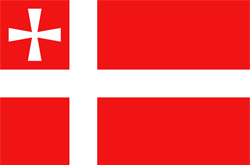
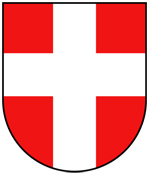



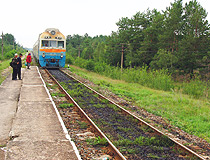
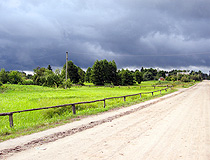
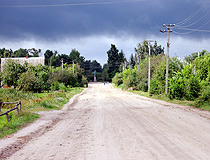

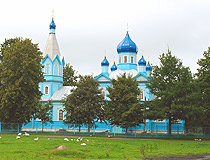
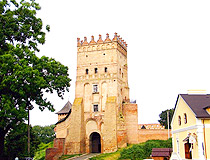
The comments of our visitors